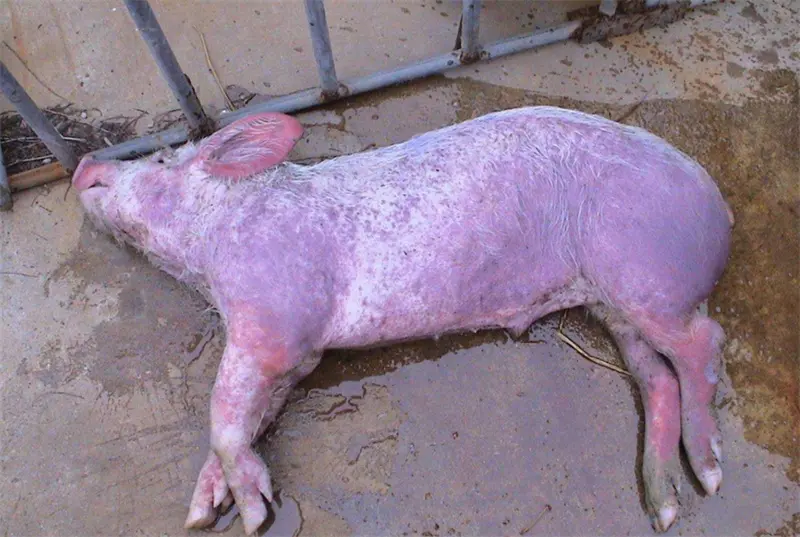Special topics on swine diseases: Porcine Reproductive and Respiratory Syndrome (PRRS)
Pathogen:
PRRS is an RNA virus with two major strains: the American type and the European type.
Susceptible Animals:
Pigs are the only susceptible species. All breeds and ages of pigs can be infected, but pregnant sows and piglets under one month of age are the most vulnerable.
Transmission Routes:
The primary mode of transmission is via respiratory infection, spreading rapidly through the air. It can also be transmitted through the digestive tract, vertically through the placenta to fetuses, or via semen. The disease spreads quickly with the wind, and even strictly managed, closed herds are affected during outbreaks.
Certain wild birds, such as mallard ducks, are natural hosts of the PRRS virus. These carrier birds show no clinical symptoms but shed the virus through their feces, which can be a source of infection. Migratory birds provide opportunities for long-distance transmission.
Epidemiological studies indicate that once a herd is infected, pigs remain carriers for a long time. The movement of carrier pigs is a primary source of transmission. Inadequate husbandry practices, poor biosecurity, and high stocking densities create conditions for outbreaks.
The severity of clinical symptoms depends on factors like the pigs’ immune status, the virulence of the virus, farm management practices, and climatic conditions. PRRS can be classified into acute, chronic, and subclinical forms.

Clinical Types:
- Acute Form:
Sows: Fever, depression, reduced appetite, lethargy, coughing, and varying degrees of respiratory distress. Some exhibit prolonged estrus intervals or infertility. Pregnant sows may experience late-term abortions, stillbirths, mummified fetuses, weak piglets, or postpartum agalactia.
Piglets: Newborn piglets may show rapid breathing, neurological symptoms such as ataxia, and increased mortality within the first week postpartum. Mortality can exceed 80%. Some pigs develop transient bluish or purplish patches on the skin of the ears, abdomen, and vulva.
- Chronic Form:
>Most sows recover their reproductive performance, but the number of live piglets per litter decreases, and conception rates may drop by 10–15% over the long term.
>Growing pigs show mild anorexia and respiratory symptoms, while boars rarely develop clinical symptoms but may experience reduced semen quality.
- Ubclinical Form:
More than 40% of pigs may test seropositive for PRRS, but less than 10% show clinical symptoms. Most infected pigs exhibit no symptoms but shed the virus, serving as major sources of transmission.

Pathological Changes:
>Abortions and Weak Piglets: Postmortem examinations reveal clear fluid accumulation in the thoracic cavity and occasional lung consolidation.
>Breeding and Fattening Pigs: No significant macroscopic changes, but microscopic examination shows interstitial pneumonia.
Secondary Infections:
Common secondary infections include classical swine fever, porcine circovirus, Haemophilus parasuis, pleuropneumonia, and toxoplasmosis.
Comprehensive Prevention and Control Measures:
- Enhanced Management:
>Strengthen husbandry practices, implement strict disinfection protocols, and maintain good environmental hygiene.
>Eliminate potential reservoirs, such as wild birds and rodents, around the farm. Maintain appropriate stocking densities.
-
Supportive Care:
- During outbreaks, administer antibiotics and supportive therapy to piglets to prevent secondary bacterial infections and improve survival rates.
-
Vaccination:
- Use bivalent live vaccines on growing pigs. Protective antibodies develop within 7 days of vaccination and last for over 16 weeks. Vaccination provides noticeable protection for piglets during outbreaks.





